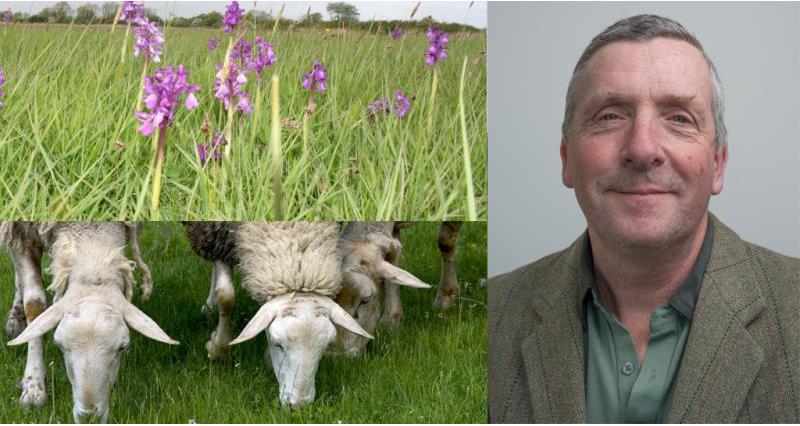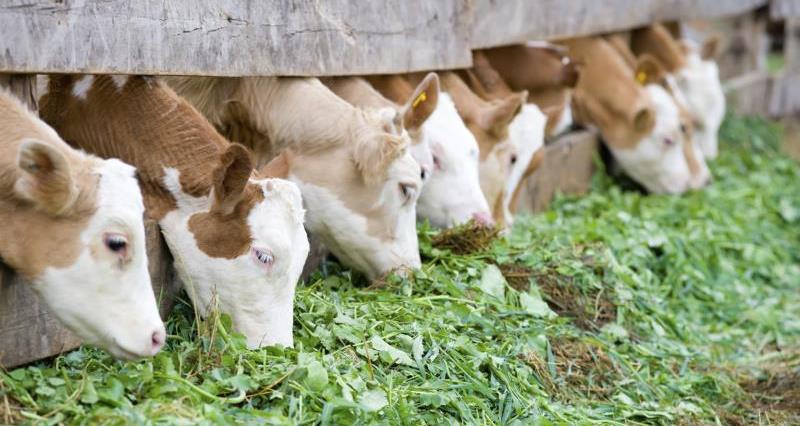John Alpe, the North West representative on the NFU National Organic Issues Group, explains what it’s like to manage a diverse family-run organic farm. He writes:
We farm at New Laund Farm in Whitewell, Clitheroe. The farm has grown to around 1,000 acres, running from the banks of the River Hodder to the top of our heather moorland fell which is between 500 to 1,500 feet above sea level.

Our enterprises include breeding sheep, dairy cows with followers and beef cattle. We are part of a Countryside Stewardship Scheme which was converted into HLS. The stocking rate on the farm has fallen from our conventional past, but with lower stocking the livestock certainly are easier to manage. Health problems have decreased but vaccination has increased over the years on veterinary advice as homebred stock are more susceptible to any potential disease they may be exposed to.
We have around 200 acres involved in ground nesting and wading bird habitat via HLS. Notably, Lapwing, Curlew and Oyster Catchers numbers are increasing. The RSPB help with bird surveys to validate the birds found on the farm. Species help rich grassland and woodland regeneration. Wildflowers, Primrose, Ragged Robin, Harebells and Orchids all thrive on the farm.
One of my favourite parts of the stewardship process is educational access. We host around 25 visits a year to all manner of groups, from university graduates to groups with learning disabilities - all bring something different and are a pleasure to have on the farm. Personally, I also enjoy taking farming into the classroom and work closely with FACE who are keen for farmers to engage with city centre schoolchildren.
With three and a half kilometres of dedicated concessionary disabled access paths around the farm, any disabled person can use our metal tracks with an all-terrain mobility scooters 365 days of the year. We also have two dedicated disabled access days where we provide the scooters with guided tours.
Commercially, our lambs are sold direct to slaughter through 2 Sisters Food Group who have a collection centre less than seven miles away. Tesco are one of the supermarkets that buy our lambs from the group – organically there is a premium of around 10p per kilo.
The milk from our 40 dairy cows is sold to OMSCO and is set to average around 40p per litre. However, our yields are around 6,000 litres which reflects the low input system we manage on the farm. OMSCO sell around 60% of the organic milk produced in the country. We are very pleased with OMSO’s achievement and proud to be part of this vibrant family orientated co-operative.
The market is very diverse with liquid milk, cheese, yoghurt, butter and milk powder all being part of our portfolio. However, the customer base is not only domestic but international with Europe, Asia and the USA all being destinations for our products.
I was recently invited to join a group of OMSCO representatives in the USA to meet with our American partners – Organic Valley in Wisconsin. They are huge with 2,000 members and many staff but they are all committed to the organic cause. Both members and staff had a real family co-op ethos pivoting on producing good returns via a strong togetherness.
Approximately 45% of the Organic Valley membership is Amish. We visited an Amish farm where all the field work is horse powered. They are an incredibly friendly bunch and I came away with great admiration. The young people within this community are encouraged to explore the outside world. However, they informed us that after a few years, most of them return to their Amish lifestyle. Despite all the technical advantages around them, they still hold on to their lifestyle and beliefs.
